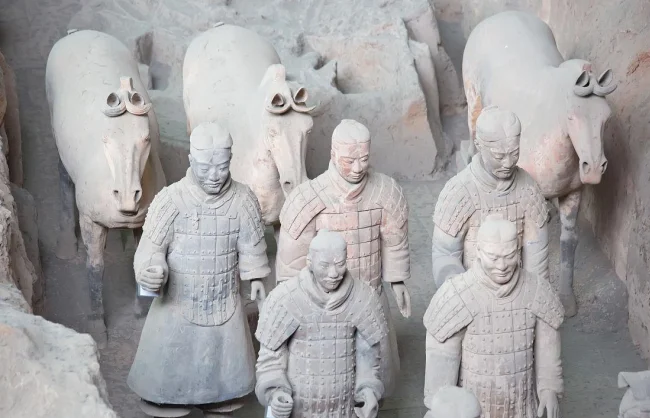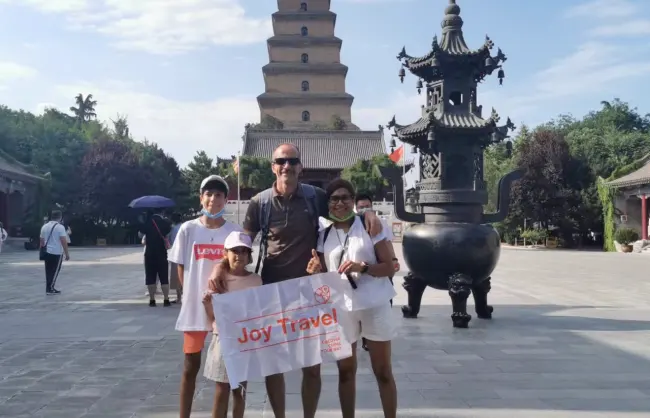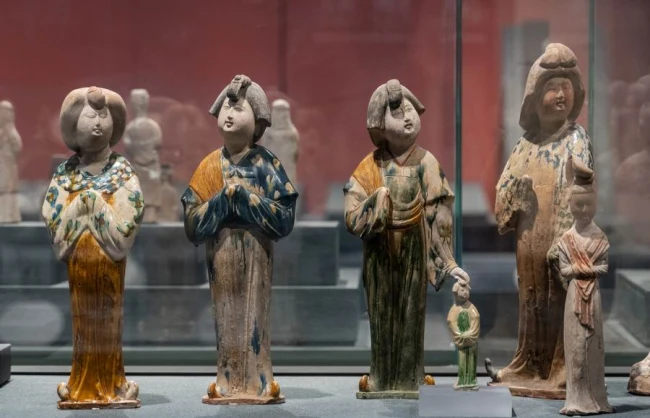From an ancient historical capital to a “Net Celebrity” city-Defining Xi’an in a different way
When it comes to the perfect combination of fashion and ancient charm, Xi’an must be on the list! Walking on the street, you will not only feel the traces of history, but also be attracted by the food and entertainment activities on every corner.
If you have a travel plan, don’t hesitate! At present, 53 A-level scenic spots such as Xi’an Datang Furong Garden, Xi’an City Wall, and Daming Palace National Heritage Park implement a free admission system. We, Joy China Tour, will lead you to explore this ancient town completely in 5 days.
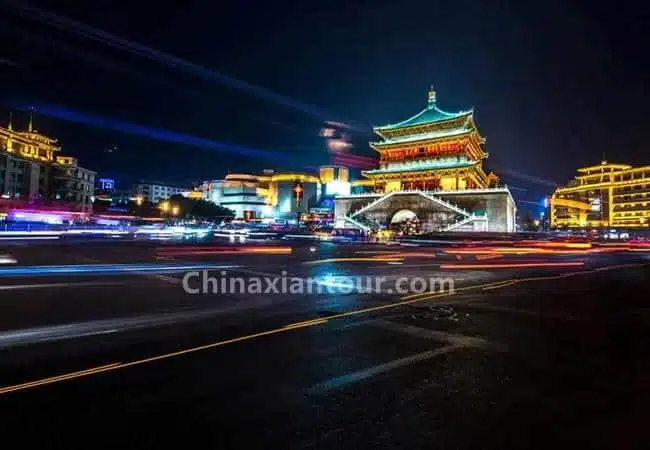
Day 1
Travel around the ancient city
The ancient city wall is surrounding the whole city, enclosing the geographical position and psychological belonging of old Xi’an. The must-visit attractions include Muslim Quarter, Stone Forest, Xi’an City Wall and Bell and Drum Tower, among which the first three will take 2 to 3 hours each.

Arrive at Muslim Quarter early in the morning, and enjoy a bowl of warm “Mutton soup” in the time-honored Mutton and Bread Pieces in Soup Restaurant. After that, measure this characteristic block with your feet. The horizontal and vertical paths continue the “lifang” pattern, and mosques are featured by traditional Chinese architecture. Don’t forget to come back during supper time since the delicious roast beef and mutton are waiting for you.

Wander around the Muslim Quarter
Starting point: The Drum Tower End point: South Guangji Street
Distance: 5.5 kilometers
Time required: about 4 hours (including travel time)
Although the north courtyard gate on the back of the Drum Tower is quite crowded, this is the most classic angle to walk into the Muslim Quarter. As soon as you bypass the Drum Tower, please pay attention to the west side, and pass through the archway and market in Huajue Lane to Huajue Lane Mosque.

After that, return to the North Yard Gate from the Xiyang City street. The Gao Family Courtyard is just beside the intersection. When you have passed through the crowd to the north, and get to the “Humanities” stone archway, you might as well taste an oily and spicy ice cream in Shaanshisan Ice Cake Candy. Then turn west along Maixian Street into Xiaopiyuan, and return to the third largest temple in the quarter Xiaopiyuan Mosque for a visit.

Continue westward to the south of north Guangji Street. At the next intersection, you can have a glimpse of the Dapiyuan Mosque. Continuing to the south, there are several famous restaurants in Majiashizi, and there are always long lines waiting for the delicious food. Turn west and find the Guangming Lane, you will see Japanese aircraft bombed the Xi’an Site that witnesses the catastrophe of the war. Then head north and detour around the gate to arrive at the Xicang Flower and Bird Market. In addition to the chirping caged birds, you can also see stalls selling second-hand small items. Going forward to the Sajin Bridge, don’t forget to go to Yuntai Temple first to see if the door is open.

The Sajin Bridge at the back of the Muslim Quarter is a food street that has doubled in popularity in recent years. Heading to the south on foot, you can see Sajin Bridge ancient Mosque. The ancient temple is a newly built Islamic-style building, only the old gatehouse and the old trees in front of the gate show the long history; there is also a female temple in the alley. When encountering Sajin Bridge Muslim West Mosque, please turn east into the back Street, and then enter the small learning alley from the entrance on the north side. There are almost no tourists here, but two mosques in Xiaoxuexixiang Muslim Middle Temple and Xiaoxuexixiang Muslim Yingli Temple.

After appreciating the theme wall paintings of Honghu Temple in the Tang Dynasty, you will head east along the alley directly opposite Yingli Temple and come to the bustling place. The Daxuexixiang Mosque is not far from the north. Turning right to the north and entering a hidden alley, passing through the “primitive” residential area, you will come to the City God Temple which is a Chinese-style Taoist temple inside the high wall. Although back to the modern city through the busy West Street, you will be drawn back to history through the introductory monument on the central of the Tang Chang’an city on the east side of the South Guangji Street.

The Bell and Drum Tower sits at the most central location in Xi’an, and has been providing time for Xi’an people from the early Ming Dynasty to the late Qing Dynasty. Today, there are still antique performances such as chiming and drumming here every day, and the beauty of traditional wooden structures is also worthy of stopping your feet to appreciate. Climbing to the Bell tower can also overlook the whole city. Usually every performance of the Drum Tower is 30 minutes earlier than the Bell Tower, therefore, you can go to the Drum Tower first and then to the Bell Tower.

Comparing the City Wall of Xi’an to a square dial, the Bell and Drum Tower is the axis plate that adheres to the center. The Bell Tower, which was built in the Ming Dynasty (1384), has been existed for more than 600 years. Today, it still retains the original four-cornered spire, double eaves and three-drop water structure, which is a masterpiece of Ming and Qing official architecture; the experience of the entire relocation from the west side of the Drum Tower to the present site in 1582 is also a miracle of ancient engineering technique. The Bell Tower will have chime performances at 9:10, 10:30, 11:30, 15:30, 16:30, 17:30 every day, and free explanations are provided at 9:00 and 15:00.
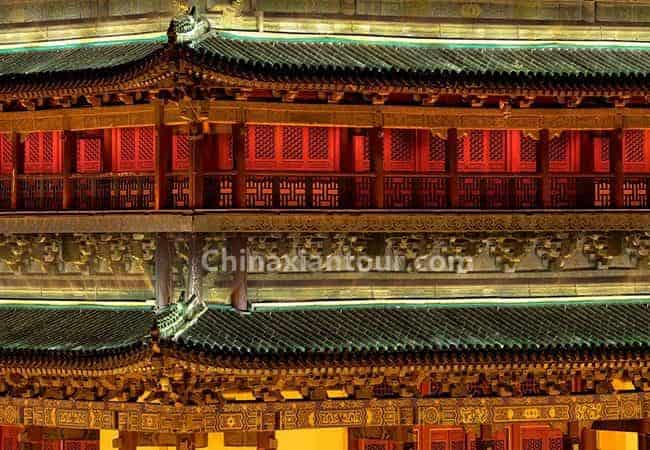
Compared with the neighboring Bell Tower in the southeast, the Drum Tower is 4 years older, and the architecture of which is more spacious and majestic. As the largest surviving drum tower in China, the two wooden plaques with a blue background and gold characters on the Drum Tower are also famous for their huge area. But none of them are original. The drum in the building is also heavy. On the 24 drums around the wooden building, small seal characters are written to correspond to the 24 solar terms.

Beilin Museum
The stone steles in Xi’an Stone Forest have been cherished since the Tang Dynasty. In the later Song, Yuan, Ming, and Qing dynasties, they are like stone dictionaries that record new masterpieces keeping up with the times, which have written a living history of Chinese character art.
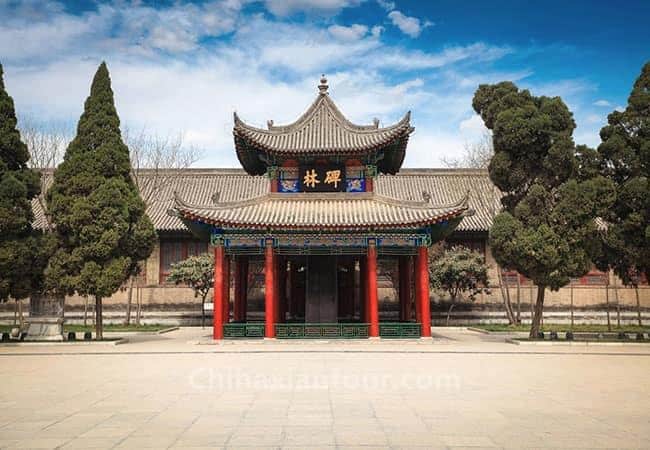
This is not only a holy place for calligraphy lovers, but also can trace back to history and humanities: the stone horse of Xiongnu, the stone rhinoceros of Li Yuan, the cross of the Nestorianism, the pattern of the Confucian temple, the eight scenic spots in the Guanzhong… The gate of the academy leading to the Stone Forest is the “four treasures of the study” street, which can warm up your journey to the Stone Forest.

The ancient city wall is like a seal that is firmly poked in the center of Xi’an. It marks the historical location of Chang’an City. The city wall of Xi’an in the Ming and Qing Dynasties have been demolished and repaired several times, and finally be completed. The mottled old city bricks tell the history of the northwestern city, which will draw travelers from modern transportation into the atmosphere of historical and cultural cities.
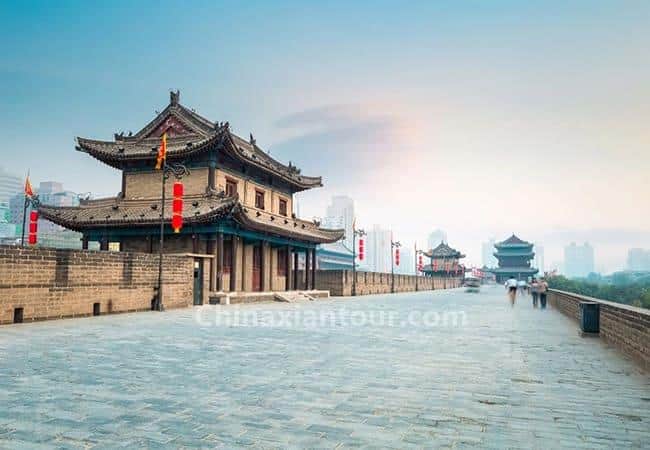
You can take a walk along the foot of the city wall, or wander in the surrounding city park. The coolest way to play on the city wall is to ride a circle and see all sides of the ancient city.

Day 2
Journey to the south of Xi’an
If you compared the ancient and modern maps, you will find that the main body of the Tang Chang’an city is in the south compared with today’s ancient city. Two thousand-year-old pagodas, two museums and a pedestrian street full of Tang dynasty characteristics are all in the south of the city, which is another highlight of your Xi’an itinerary.
The thickness of the loess in Shaanxi witnesses the long history of this city. Among the more than 3,000 exhibits in the exhibition hall, the State Council has assessed 9 cultural relics that are forbidden to go abroad (border) for exhibition, and there are “18 National Treasures” that have been refined in the street stalls. If you are lost in thought for a moment, you may pass by the national first-class cultural relics.

The numeral exhibited cultural relics tells the history of the Three Qin Dynasties. The bronzes of the Western Zhou Dynasty, the golden jadeware of the Han and Tang Dynasties, and the porcelain of the Northern Song Dynasty are all fine products. But these are just the tip of the iceberg with more than 1.7 million cultural relics in the museum. The official announcement in 2019: A new Shaanxi History Museum will be built in Chanba Newly District!

Highlights of this tour
*Relive the Chinese prosperous era of “Great Han” and “Prosperous Tang”.
*Watch “The Longest Day in Chang’an” at the Hejiacun Cellar Cultural Relics Exhibition.
*To see which top national treasures you will meet in the National Treasure Hall.
*Complete a magical experience to explore the ancient tombs of the Tang Dynasty.
*Have a close look at the “representative” of the Terracotta Warriors and Horses in the Shaanxi History Museum.
*Observe the bronzes in Shang and Zhou dynasties and porcelain in the Northern Song dynasty.
Small Wild Goose Pagoda(Jianfu temple)
It is co-located with the Xi’an Museum. The ancient pagoda was a survivor of Tang Chang’an, and the museum used models and cultural relics to retell the changes in the ancient capital. Classical temples and modern gardens are connected together. Although the small wild goose pagoda is missing two floors, it is still upright high. Its dense eaves and the pavilion of the big wild goose pagoda are the two basic structures of the Chinese pagoda.

The shaded garden courtyard is another highlight of the Small Wild Goose Pagoda. Especially in autumn, the golden ripples of ginkgo and plane trees are very romantic. In 2014, the Small Wild Goose Pagoda was listed as a heritage site in the World Heritage “Silk Road: Road Network of Chang’an-Tianshan Corridor”.

Big Wild Goose Pagoda
The quaint and dignified Big Wild Goose Pagoda is not only the most recognizable city landmark in Xi’an, its seemingly simple but graceful square pavilion-style brick tower is an excellent symbol of the grand Tang Dynasty. Looking north and south, the fountain show, light show, the Ever-bright City… are also showing Xi’an’s fashion.

The profound relationship between monk Xuanzang in the Tang dynasty and this place allowed him to enjoy the admiration of ordinary people.

Grand Tang Dynasty Ever-bright City
Looking south with the bronze statue of Xuanzang in the South Square, and you will see the “Ancient Grand Tang Dynasty” that he dreams about on the way to learn the scriptures. When night comes, a dazzling array of colored lights, unpredictable light pillars, and the imitated Tang architecture… can indeed bring you some surprises. You will marvel at the design of interactive open landscapes such as Shouting Spring and Piano Street, as well as the regular performances of “Internet celebrity” programs such as Tumbler and Stone Man, and the presence of various bands and Qinqiang troupes. Just follow your senses and the light, audio to “Dream back to Grand Datang Dynasty” now!

Day 3
In-depth Relic Site Exploration
In other directions in Xi’an city, different dynasties have also left different historical traces. Various relic parks can be selected according to your own interests. Or directly head to popular scenic spots such as Terracotta Warriors and Horses and Mount Huashan.
Daming Palace National Heritage Park
Daming Palace National Heritage Park is the most glorious palace in Chinese history. As the first batch of national archaeological heritage parks, it maintains a pretty good balance between the cultural relics protection and tourism development, and the transportation is very convenient. Therefore, it can be the first choice for similar scenic spots in Xi’an.
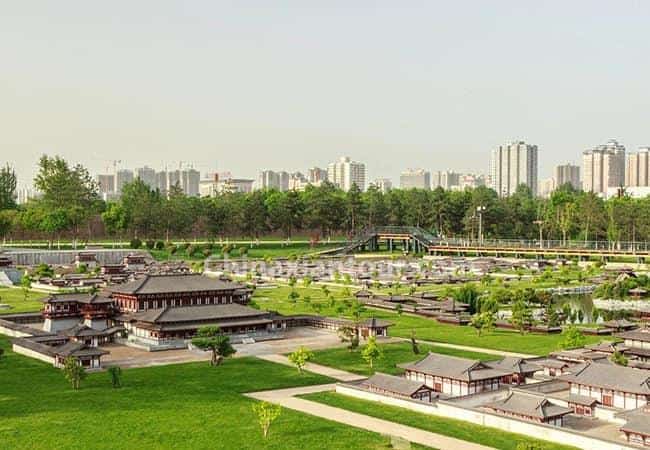
The Danfengmen Relic Museum in the north of Xi’an Railway Station requires an entrance ticket to visit. Although the Hanyuan Hall has only the base ruins, it is still shocking enough. It was once the place where national ceremonies and celebrations were held for the emperor, and it is still the commanding heights of this area, overlooking the surrounding vigorously.

Banpo Museum
In the Banpo Museum, there is a relic hall that is half the size of a football field. The ancient human settlement community ruins more than 6000 years ago retain the same appearance as when they were unearthed decades ago. Don’t worry that the history of the Neolithic Age is incomprehensible or too boring. The museum explains the ancient life of the Banpo people and Yangshao culture in a simple way.
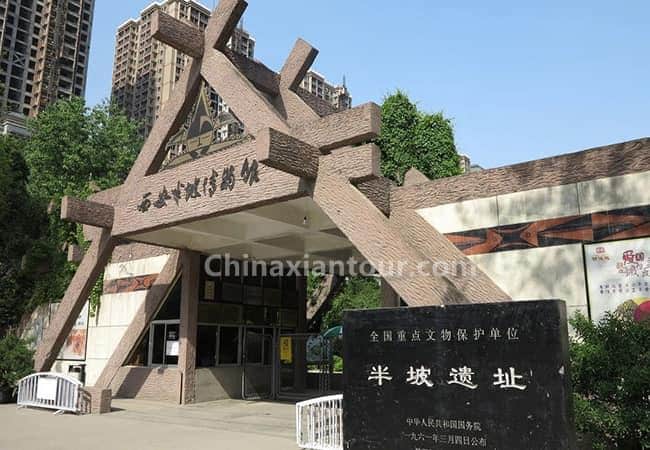
At the beginning of the visit, it is recommended to watch the documentary that is repeatedly played in the video room. Stepping into the relic hall, the area of 4,500 square meters makes you feel like crossing time and space. In the tomb exhibition hall, several transparent coffins lie quietly with the remains of ancestors 6000 years ago. They maintain their different postures when they were first unearthed. The videos and texts on the side explain the various tomb systems.

Qinglong Temple
The original building of Qinglong Temple has long gone with the wind, and there are only a few pillar foundations and platform foundations, but the reconstructed courtyard reappears the style of the Tang Dynasty, and the cherry blossoms donated by Japan are swayed into the garden in spring.
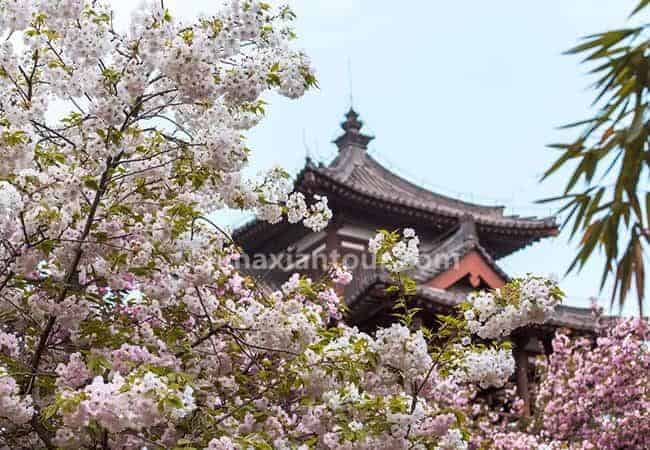
There are also stone steles of national key cultural relics protection units in the temple, referring to the Tang Dynasty sites such as the pagoda. The Qinglong Temple Relic Museum in the Guyuan Building displays cultural relics such as bricks and tiles, as well as the model sand table of Qinglong Temple in its heyday.
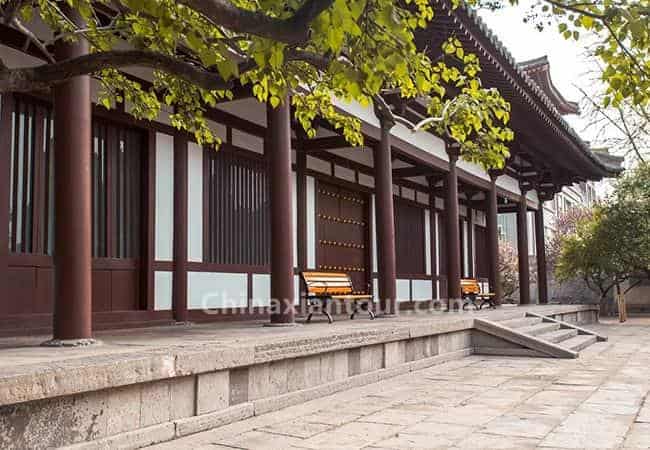
Weiyang Palace Relics Park in Chang’an City
Tracing back about 700 years ago from the Tang dynasty, the Han city located in the northwestern corner will appear in front of you. Ascending to the ruins of the front hall that is still more than 20 meters high, you can imagine the majestic scene that the emperor of the Han Dynasty accepting the congratulations of a hundred officials. The Han city is exactly what Xi’an people call here. For many years, it has retained the appearance of a village in the city, and some places also regularly hold open-air markets.

Day 4~5
Suburbs Exploration
The suburbs of Xi’an include Lintong District, Chang’an District, Huyi District, Lantian County and Xianyang City. There are many scenic spots and are relatively scattered. You can arrange 1 to 2 days itinerary according to your own interests and preferences.
Terracotta Warriors and Horses
In the morning, depart from the city to Lintong, visit the Museum of Emperor Qin Shi Huang’s Mausoleum and Lishan Garden, and witness the artistic charm of the terracotta warriors and horses. In 1974, the terracotta warriors and horses appeared accidentally, which has attracted people’s eyes. The Terracotta Warriors and Horses Museum has always been the first choice for Xi’an tourist destination. Only standing in front of Great Pit No.1 can you feel the magnificence of Emperor Qin Shihuang’s Underground Corps. The lifelike warriors seem to be resurrected in an instant, waiting in front of you. Pit No.1 has the largest area. The huge square matrix middle east forwards, west defenders and flanks are all crossbowmen facing outwards, while in the middle are 38 main columns and 45 tanks.

In the afternoon, you can have a look at the Begonia Pool where Concubine Yang has bathed in Huaqing Palace, and then climb up to Lishan to get a glimpse of the scenery of Lintong. If the budget is sufficient, it is also a good experience to watch a show of “Everlasting Regret” at Huaqing Pool at night.

TIPS: If the next stop is Huashan Mountain, you can stay in Lintong overnight. It is also very convenient to go directly to Huashan Mountain by car the next day.
South Wutai Mountain
The South Wutai Mountain in Chang’an is like a “representative” of the Qinling landscapes. South Wutai is also named due to 5 temples built on 5 small hills, and it is also listed on the “Eight Famous Mountains of Buddhism”. You can take a day to climb from the Wenshutai, Qingliangtai, Lingyingtai and Sheshentai to the highest point of Guanyintai, then you will see the marvelous mountains and the emerald-like Shiyanyu Reservoir below.

Unlike Mountain Wutai in Shanxi, this is the dojo of Guanyin Bodhisattva. On June 19 of the lunar calendar on the day of Guanyin enlightenment, there is a lively meeting. For outdoor enthusiasts, South Wutai is far less difficult to hike than Cuihua Mountain, but the scenery is still outstanding. If you are fortunate enough to encounter the sunny after the rain, you will appreciate the Buddhist temple revealed in the sea of clouds which is more like a fairyland.
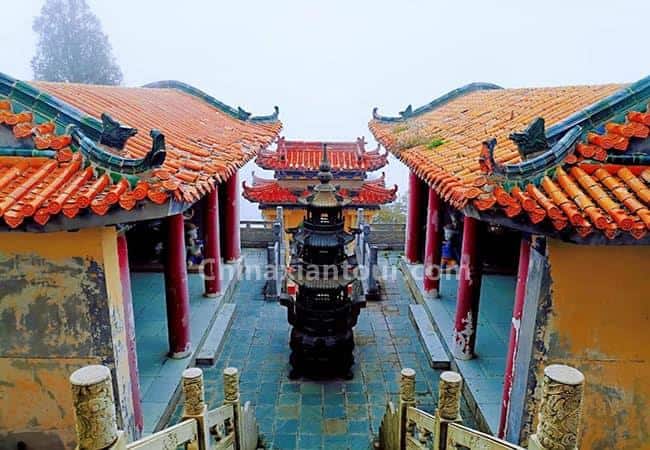
TIPS: It is recommended to set aside some time to visit the Guanzhong Folk Art Museum at the foot of the mountain.
Caotang Temple
Caotang Temple is the first national translation field for Buddhist scriptures after the introduction of Buddhism to China. The Kumarajiva stupa, a national treasure in the temple, is worth your special trip. It is built by the eight-color jade offered by the Western Regions. Admire it through the glass windows, but you can still clearly see the twelve-story pagoda body with crystal colors. When strolling through the temple, you will hear the quiet sound of the Sanskrit, and in the distance is the verdant shadow of Zhongnan Mountain.
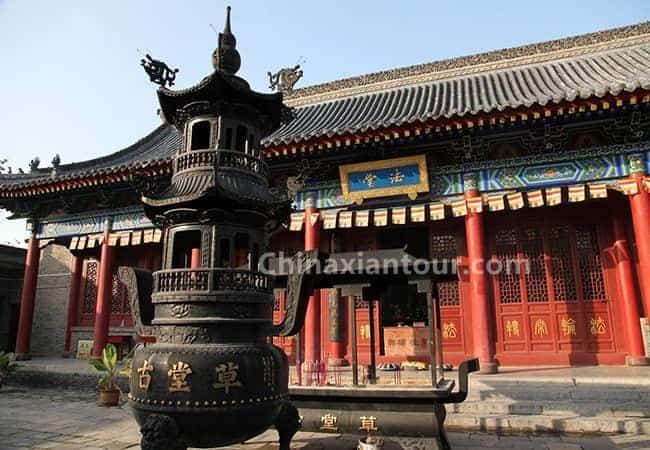
TIPS: You might as well take bus 928 back to Xi’an from Caotang Temple, and to eat a bowl of authentic local delicacy at Qinzhen on the way.
Hanyang Mausoleum and Xianyang
The excavation of Hanyang Mausoleum opened up an “underground kingdom” for the world. The burial objects in the 10 burial pits are all-encompassing and eye-opening. The cemetery where Emperor Liu Qi and his Queen were buried is the largest one among the tombs of the Han Dynasty emperors. 81 outer hidden pits have been discovered, radially distributed around the enclosed soil, and there are more than 10,000 subordinate tombs in the mausoleum.
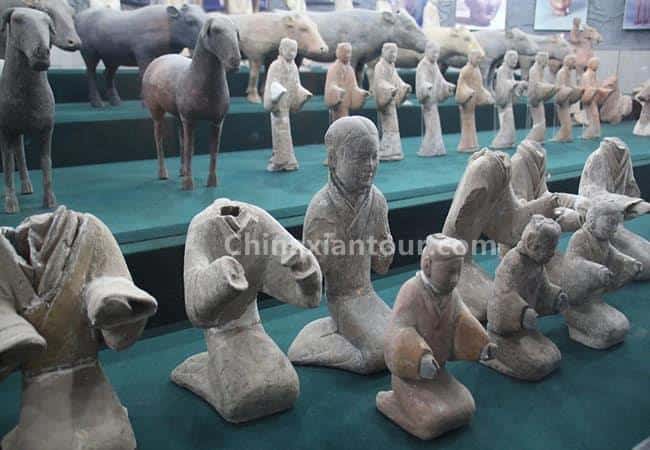
The Hanyang Mausoleum can be visited in half a day. After that, you can take a bus to Xianyang to admire the Western Han Terracotta Warriors and Horses in Xianyang Museum. You can also compare the differences between the two Han Tombs. If you want to continue exploring the Tang Dynasty imperial mausoleum on Xianyang Plain, you can also transfer to the Tangshunling Relics Park to see the majestic walking lion.

#Delicacies#

Qishan saozi noodles play an important role in the Shaanxi pasta family. The most authentic way to eat is, a small bowl of soup with only one chopstick noodles that you can eat it in one bite. Fufeng saozi noodles in neighboring counties are also well-known. Because the cooking methods of saozi are different, the noodles are neither spicy nor sour, and the taste is relatively mild.
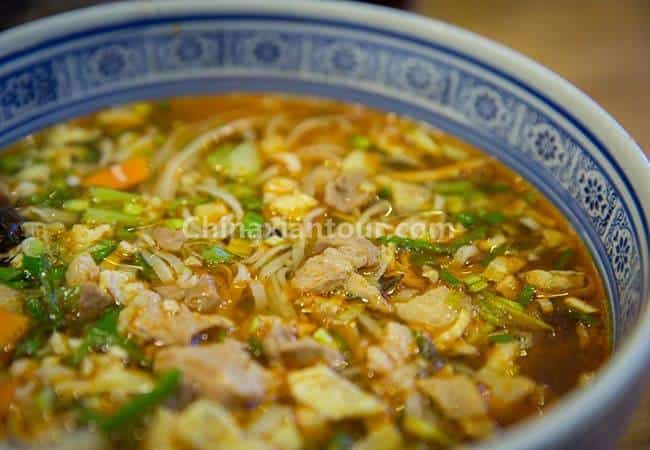
The other kinds of noodles like Chemian noodles, biangbiang noodles, Oily noodles are all very famous and delicious.
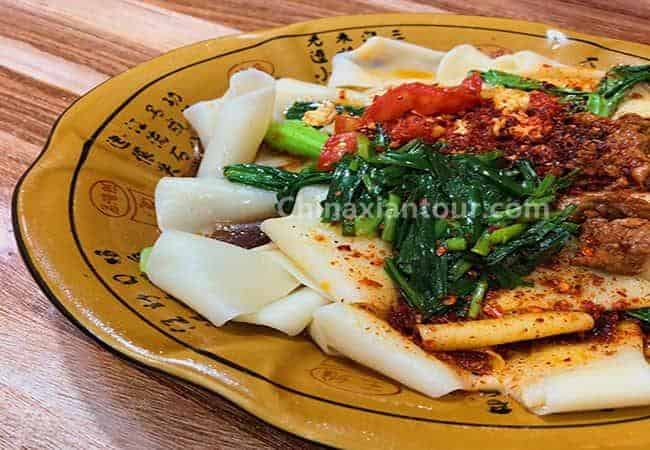
Flour can be made to kinds of delicacies in Shaanxi. In addition to noodles, the “Three Top food” of Xi’an snacks, Rougamo, Mutton and Bread Pieces in Soup and Cold Rice Noodles are all made mainly of flour.

Follow us to feast your eyes and stomach in this ancient city!


